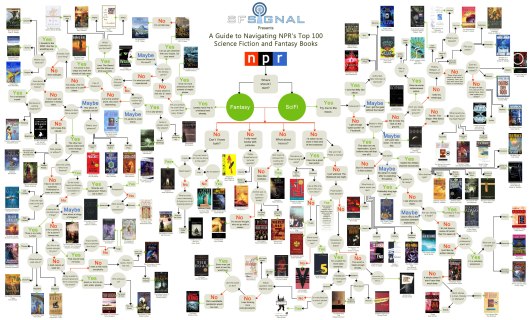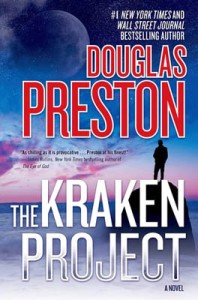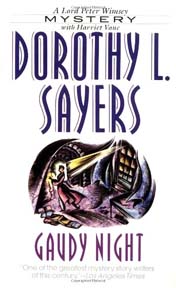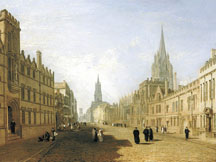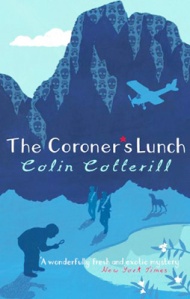Contemporary London is brought vividly to life in this well-crafted crime fiction series featuring soldier-turned-private detective Cormoran Strike. The illegitimate son of a rock star and a super-groupie, he moved with his mother from one squat to the next, somehow keeping up with his studies despite the distractions of hangers-on and “the constant fug of cannabis smoke” before ending up with the Special Investigative Services. The loss of his leg ended his military career but his private investigative practice has recently had more ups than downs after successfully closing some high-profile cases (The Cuckoo’s Calling (2013), The Silkworm (2014). Cormoran Strike has an innate sense of justice, an unflagging determination to get the job done, and a gruff sense of honor, all of which seem to conspire to guarantee him a place inches from being on the dole. His ambition is reserved for the job at hand and he’s very good at the job, often to the consternation of the Metropolitan Police. His latest case, effectively dropped at his door, will prove especially trying as even chasing the false leads takes him to where ‘unsavory’ and ‘unbalanced’ overlap with his past.
soldier-turned-private detective Cormoran Strike. The illegitimate son of a rock star and a super-groupie, he moved with his mother from one squat to the next, somehow keeping up with his studies despite the distractions of hangers-on and “the constant fug of cannabis smoke” before ending up with the Special Investigative Services. The loss of his leg ended his military career but his private investigative practice has recently had more ups than downs after successfully closing some high-profile cases (The Cuckoo’s Calling (2013), The Silkworm (2014). Cormoran Strike has an innate sense of justice, an unflagging determination to get the job done, and a gruff sense of honor, all of which seem to conspire to guarantee him a place inches from being on the dole. His ambition is reserved for the job at hand and he’s very good at the job, often to the consternation of the Metropolitan Police. His latest case, effectively dropped at his door, will prove especially trying as even chasing the false leads takes him to where ‘unsavory’ and ‘unbalanced’ overlap with his past.
At the start of this third entry in Galbraith’s series, the image of a parenthesis (punctuation’s workhorse of the informational aside) is enlisted in a description of a murderer mid-gloat.
He had not managed to scrub off all her blood. A dark line like a parenthesis lay under the middle fingernail of his left hand. He set to digging it out, although he quite liked seeing it there: a memento of the previous day’s pleasures. After a minute’s fruitless scraping, he put the bloody nail in his mouth and sucked.
The transformation of something so ordinary into something so not is insidiously chilling—the first of many tiny alchemies in both people and things that occur throughout the novel. The juxtaposition of before and after creates a subtle but constant atmosphere of unease against what should otherwise be the happy anticipation of a public celebration.
London’s preparations for the royal wedding of Prince William and Kate Middleton are in the final stages when Robin Ellacott, Strike’s elegant assistant, signs for a package hand-delivered to their Denmark Street office. Addressed to Robin, the tidily-wrapped box contains, rather than the disposable cameras she’s expecting for her own wedding, the gruesome tribute of a woman’s leg severed to imitate Strike’s war injury. The enclosed card is typed with a few cryptic lines—a mystery to everyone but Strike.
‘”It’s gibberish,” [Wardle] said, then read aloud: “‘A harvest of limbs, of arms and of legs, of necks—'”
“‘— that turn like swans,'” interrupted Strike, who was leaning against the cooker and too far away to read the note, “‘as if inclined to gasp or pray.'”
He recognizes them immediately as lyrics by Blue Öyster Cult, from a song with a very personal connection to his past, appropriated now to deliver an unmistakable threat to his future—and Robin’s. The pressure to identify victim and sender forces them both to reveal aspects of their histories they would prefer remain buried and puts a financial squeeze on Strike’s investigative practice as potential clients are inclined to avoid “the twin stenches of failure and perversity” that rise proportionally with the time required to find answers. Adding to Strike’s stress is that, despite knowing she is on the killer’s menu, Robin is determined to assist with the field work. Though self-conscious about her lack of experience, she is anxious to prove her worth and her commitment to the business’s success.
In no small measure, Robin’s management and research skills have improved the practice immeasurably since she first arrived as a temporary secretary (The Cuckoo’s Calling). Tall, blonde, and with an admirable credit history, her world seems far removed from Strike’s (“a Labrador and a Land Rover and a pony”) yet she’s also been touched by horror, had her life derailed, and fought her way back. Her moxie and resourcefulness have earned Strike’s respect but still she contends with “men who considered displays of emotion a delicious open door; men who ogled your breasts under the pretense of scanning the wine shelves; men for whom your mere physical presence constituted a lubricious invitation.” Her anger sometimes causes her to question Strike’s actions and her place in the practice but there is no doubt that, in the tiny Denmark Street office with its perpetually empty biscuit tin and farting couch, she has found purpose.
Career of Evil is a beautifully written and absorbing mystery, full of details and depth that will commandeer a few neurons and set up shop. The complexity in these characters’ lives makes them both relatable and memorable and I’m looking forward to monitoring their continued growth. Please visit robert-galbraith.com for more information about this novel and its predecessors and for updates about the BBC’s new Strike Series.
 The race for the mysterious treasure is on but no one knows the hotel better than Warren, who’s been cleaning and patching up the place all by himself for the last five years. That’s all the time it’s taken for his Uncle Rupert to let the mansion and the grounds fall into disrepair. Known for his laziness, Rupert became even more befuddled when he unexpectedly married Aunt Annaconda four months ago. She is not at all nice: she insults Warren about his looks (his face is a bit toad-like and his teeth are crooked—but he has a big heart, a full head of luxurious hair, and is very clever), she bosses him around, and she inevitably underestimates him. Warren tries his best to steer clear but, unfortunately, his aunt has a habit of turning up where he least expects her. She is determined to have the power of the Eye for herself and isn’t shy about tearing the hotel apart to find it. She is a frightening adversary but Warren has some unusual friends on his side. In the fight against his aunt’s supernaturally-powered greed, Warren’s kindness, loyalty, and sharp thinking are his secret weapons.
The race for the mysterious treasure is on but no one knows the hotel better than Warren, who’s been cleaning and patching up the place all by himself for the last five years. That’s all the time it’s taken for his Uncle Rupert to let the mansion and the grounds fall into disrepair. Known for his laziness, Rupert became even more befuddled when he unexpectedly married Aunt Annaconda four months ago. She is not at all nice: she insults Warren about his looks (his face is a bit toad-like and his teeth are crooked—but he has a big heart, a full head of luxurious hair, and is very clever), she bosses him around, and she inevitably underestimates him. Warren tries his best to steer clear but, unfortunately, his aunt has a habit of turning up where he least expects her. She is determined to have the power of the Eye for herself and isn’t shy about tearing the hotel apart to find it. She is a frightening adversary but Warren has some unusual friends on his side. In the fight against his aunt’s supernaturally-powered greed, Warren’s kindness, loyalty, and sharp thinking are his secret weapons.

 soldier-turned-private detective Cormoran Strike. The illegitimate son of a rock star and a super-groupie, he moved with his mother from one squat to the next, somehow keeping up with his studies despite the distractions of hangers-on and “the constant fug of cannabis smoke” before ending up with the Special Investigative Services. The loss of his leg ended his military career but his private investigative practice has recently had more ups than downs after successfully closing some high-profile cases (The Cuckoo’s Calling (2013), The Silkworm (2014). Cormoran Strike has an innate sense of justice, an unflagging determination to get the job done, and a gruff sense of honor, all of which seem to conspire to guarantee him a place inches from being on the dole. His ambition is reserved for the job at hand and he’s very good at the job, often to the consternation of the Metropolitan Police. His latest case, effectively dropped at his door, will prove especially trying as even chasing the false leads takes him to where ‘unsavory’ and ‘unbalanced’ overlap with his past.
soldier-turned-private detective Cormoran Strike. The illegitimate son of a rock star and a super-groupie, he moved with his mother from one squat to the next, somehow keeping up with his studies despite the distractions of hangers-on and “the constant fug of cannabis smoke” before ending up with the Special Investigative Services. The loss of his leg ended his military career but his private investigative practice has recently had more ups than downs after successfully closing some high-profile cases (The Cuckoo’s Calling (2013), The Silkworm (2014). Cormoran Strike has an innate sense of justice, an unflagging determination to get the job done, and a gruff sense of honor, all of which seem to conspire to guarantee him a place inches from being on the dole. His ambition is reserved for the job at hand and he’s very good at the job, often to the consternation of the Metropolitan Police. His latest case, effectively dropped at his door, will prove especially trying as even chasing the false leads takes him to where ‘unsavory’ and ‘unbalanced’ overlap with his past.